Distinguished Alumni Award recipients
The Distinguished Alumni Awards recognize graduates from the Department of Computer Science & Engineering who have spent their professional and research careers contributing pivotal work to the greater computer science community. This recognition is given biannually during the department's Research Showcase event.
The most recent awardees are Jon Herlocker (Ph.D. 2000) and Panos Pardalos (Ph.D. 1985). They were presented with the awards during our 50th Anniversary Celebration dinner on November 22, 2019.

+
2023
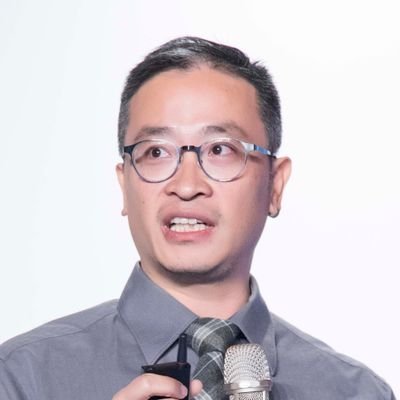
Ed H. Chi
Ed H. Chi is a Distinguished Scientist at Google DeepMind, leading machine learning research teams working on large language models (LaMDA/Bard), neural recommendations, and reliable machine learning. With 39 patents and ~200 research articles, he is also known for research on user behavior in web and social media. As the Research Platform Lead, he helped launched Bard, a conversational AI experiment, and delivered significant improvements for YouTube, News, Ads, Google Play Store at Google with >660 product improvements since 2013.
Prior to Google, he was Area Manager and Principal Scientist at Xerox Palo Alto Research Center's Augmented Social Cognition Group in researching how social computing systems help groups of people to remember, think and reason. Ed earned his 3 degrees (B.S., M.S., and Ph.D.) in 6.5 years from University of Minnesota. Inducted as an ACM Fellow and into the CHI Academy, he also received a 20-year Test of Time award for research in information visualization. He has been featured and quoted in the press, including the Economist, Time Magazine, LA Times, and the Associated Press. An avid golfer, swimmer, photographer and snowboarder in his spare time, he also has a blackbelt in Taekwondo.
+
2019

Jon Herlocker
Jon Herlocker is an industry-leading technologist experienced in both on-premises enterprise software and consumer SaaS businesses. He has deep technical experience in multiple areas including designing and operating scale-out distributed systems and applying machine learning and data analytics to decision problems. He also has significant experience and training in human-computer interaction and user experience design.
Prior to co-founding Tignis, he was Vice President and CTO of VMware’s Cloud Management Business Unit. Other positions include CTO of Mozy, and CTO of EMC’s Cloud Services division. Jon is an experienced entrepreneur having founded two other startup companies. He is a former tenured professor of Computer Science at Oregon State University, and his highly-cited academic research work was awarded the prestigious 2010 ACM Software System Award for contributions to the field of recommendation systems.
Jon holds a Ph.D. in Computer Science from the University of Minnesota, and a B.S. in Mathematics and Computer Science from Lewis and Clark College.
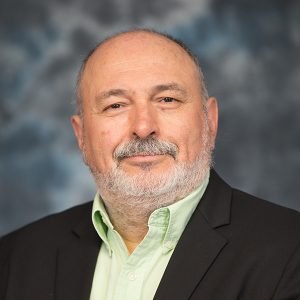
Panos Pardalos
Panos Pardalos is a Distinguished Professor and the Paul and Heidi Brown Preeminent Professor in the Departments of Industrial and Systems Engineering at the University of Florida, and a world renowned leader in Global Optimization, Mathematical Modeling, and Data Sciences. He is a Fellow of AAAS, AIMBE, and INFORMS and was awarded the 2013 Constantin Caratheodory Prize of the International Society of Global Optimization. In addition, Dr. Pardalos has been awarded the 2013 EURO Gold Medal prize bestowed by the Association for European Operational Research Societies. This medal is the preeminent European award given to Operations Research (OR) professionals for “scientific contributions that stand the test of time.”
Dr. Pardalos has been awarded a prestigious Humboldt Research Award (2018-2019). The Humboldt Research Award is granted in recognition of a researcher’s entire achievements to date – fundamental discoveries, new theories, insights that have had significant impact on their discipline.
Dr. Pardalos is also a Member of the Lithuanian Academy of Sciences, the Royal Academy of Spain, and the National Academy of Sciences of Ukraine. He is the Founding Editor of Optimization Letters, Energy Systems, and Co-Founder of the International Journal of Global Optimization, and Computational Management Science. He has published over 500 journal papers, and edited/authored over 200 books. He is one of the most cited authors in computer sciences and has graduated 63 PhD students so far.
+
2017

Paul Bieganski
Dr. Paul Bieganski has spent the last 30 years building companies as a serial entrepreneur, inventor and investor, in areas as diverse as software, Internet, embedded computers, medical devices, and bioinformatics. He has invented, patented, and built companies around technologies in areas including energy management, heart-lung transplant patient monitoring, genetic sequence analysis and e-commerce.
Paul is the Founder of Packet Power, a Computer Data Center Energy Management company and Managing Partner of Big Picture Partners, a technology, venture capital and intellectual property advisory group. Previously, Paul was a Managing Director at Cargill Ventures, a Venture Capital fund, where he and his partners successfully invested in over 40 companies in the areas of Information Technology, Cleantech and Life Sciences. Before his venture capital career, Paul was the Chief Technical Officer at Net Perceptions, a pioneer of online marketing responsible for, among other things, the now famous product recommendations on Amazon.com. Prior to Net Perceptions, he was the Vice-President of R&D at Signum Systems Corporation in Los Angeles, was Co-Founder of TeleMedical Inc. and Vice-President of R&D at Advanced Medical Systems Corporation. Paul also served as a National Science Foundation postdoctoral fellow at the University of Minnesota Center for Molecular Bioinformatics. Paul has published research on computational biology, protein structure modeling, data visualization, and software development.
Paul has extensive experience with every stage of company development – from bootstrapping through angel investing and venture funding to going public and being acquired by public companies. As an investor, he believes in very active, strategic as well as tactical involvement with his portfolio companies. Paul served as the 2008 President of the Minnesota Venture Capital Association.
Paul had the privilege and good fortune of being the first doctoral student and friend of the late Prof. John Riedl. John taught him the fundamentals of formulating research questions and presenting the answers, however great or disappointing they may turn out. He was also instrumental in fostering a unique for its time, multidisciplinary collaboration, between computer scientists and microbiologists.
Paul is the proud father of Darius, a software engineer and Julian, an aspiring entrepreneur. His wife, Kati is a Senior Lecturer at the University of Minnesota and President of the Hennepin County Bar Foundation.

Ajay Jain
Dr. Ajay N. Jain is appointed as Professor at the University of California, San Francisco, in the Department of Bioengineering and Therapeutic Sciences. Dr. Jain received his PhD in Computer Science in 1991 from Carnegie Mellon University working on computational machine learning methods. His undergraduate training was at the University of Minnesota, resulting in BS degrees in both Computer Science and in Biochemistry. He spent a number of years in the defense industry working on image processing and target recognition, concurrent with his academic training and for a brief period following his PhD. Beginning in 1992, Dr. Jain worked in a series of start-up biopharmaceutical companies on computational methods for structure-based drug design prior to joining UCSF in 1999. His research focus is in predictive computational modeling of biological systems, particularly as applied to drug discovery.
Dr. Jain is best known for his work in applied machine learning within computer-aided drug design. His foundational work was done in industry, beginning with the Compass technique, which induced a predictive model of protein-ligand interaction from ligand structures and their activities. Compass captured the 3D surface-properties of small molecules so as to effectively characterize their detailed shapes and electrostatics. A single molecule can exist in many different conformations and alignments (called “poses”) relative to a binding site. The Compass method overcame the problem of simultaneously inducing a model while also identifying the relevant poses of the ligands being modeled. Compass was the foundational method in establishing the field of multiple-instance learning, as it has come to be known within the Computer Science community.
Building on this work, also while in industry, Dr. Jain and his colleagues developed one of the first molecular docking programs that addressed ligand conformational flexibility. Given a protein binding pocket and a flexible ligand, the ligand is fit into the biding site by optimizing the score of an empirically derived scoring function. The Hammerhead docking system built upon the molecular representations, multiple-instance learning approach, and search strategy developed for Compass.
After transitioning to academia, Dr. Jain continues to work on machine-learning based binding site modeling and flexible molecular docking. In addition, his research encompasses state-of-the-art methods for computing ligand similarity, protein binding-site similarity, and predicting likely drug side-effects. With his long-term collaborator, Dr. Ann E. Cleves (Jain), direct application of the methods to drug discovery is carried out, both within the academic environment and with pharmaceutical industry partners.
+
2015
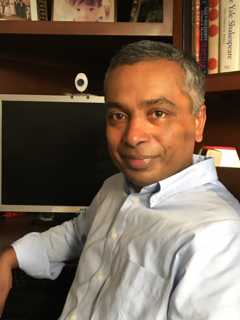
Ananth Grama
Ananth Grama is a Professor of Computer Science at Purdue University, the Director of the Computational Science and Engineering, and the Computational Life Sciences programs, and Associate Director of the Center for Science of Information, a Science and Technology Center of the National Science Foundation.
Ananth received his Ph.D. in Computer Science in 1996 from the University of Minnesota under the guidance of Prof. Vipin Kumar, his M.S. in Computer Engineering from Wayne State University in 1990, and B. Engg. in Computer Science from the Indian Institute of Technology, Roorkee in 1989. He joined Purdue in 1996 as an Assistant Professor and has been there since.
Ananth’s research interests include parallel and distributed computing, and their applications in modeling and analysis in diverse domains. On these topics, he has authored a number of papers, widely cited texts (co-authored with Profs. Kumar, Karypis and Dr. Gupta), and software artifacts. Recent research in Ananth’s group has resulted in fundamental advances in reactive atomistic modeling, analysis of molecular interaction networks, tissue-specific models and their use in understanding and alleviating pathologies, and systems infrastructure in support of these and other large-scale computing applications.
Ananth’s work has been recognized though a number of awards, including the Purdue University Outstanding Assistant Professor of Science (1998), the NSF CAREER Award (1998), Purdue University School of Science Outstanding Teacher Award (2002), Purdue University Faculty Scholar (2002), Most Influential Professor in Computer Science (2010), and Fellow of the American Association for the Advancement of Science (AAAS) (2013).
+
2013
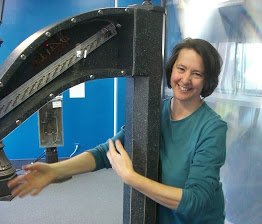
Rebecca Schatz
Rebecca Schatz is the founder and former president of The Works, a hands-on museum of engineering that now welcomes over 75,000 children each year. Its mission is to inspire the next generation of innovators, engineers and creative problem solvers. She remains interested in catalyzing STEM education ventures for young people in under-served communities, compiling engineering design challenges for formal and informal engineering educators, encouraging entrepreneurs and innovators, and exploring how people learn things, including confidence, risk-taking, resilience and creativity.
Since retiring from The Works, she has continued with her mission of outreach and has started Code Savvy, a new not-for-profit organization dedicated to inspiring kids and adults to become code-savvy, that is, to understand the kind of creative thinking that goes into coding, and to try out programming computers and devices. Code Savvy is also keen to bring more diversity -- gender and ethnic diversity -- to the coding profession and to computer science; creative problem solving relies on diverse backgrounds and viewpoints.
Rebecca started programming 40 years ago, toggling binary instructions into a PDP-11, and enjoyed many years as a programmer, network engineer and technology executive before entering the nonprofit world. She now challenges the computer science community to catalyze a diverse new generation of computer professionals and code-savvy citizens to fulfill the vast opportunities of this dynamic field; please contact rebecca@codesavvy.org to become involved.
+
2011

Kevin Driscoll
Mr. Driscoll is an Engineer Fellow in Honeywell's research labs with 40 years experience in safety and security critical systems; including the aspects of hardware, software, and systems design. He currently is helping to apply TT-Ethernet to aerospace applications and is advancing formal methods tools for NASA. He was a principal designer of the SAE AS4710 PI-bus and the ARINC 659 SAFEbus, the only two backplane bus standards with significant fault tolerance. For this work, he was given Honeywell's highest award for technical achievement, the H. W. Sweatt award. He led the VHSIC fault tolerance program and helped design the VHSIC TM bus, which became the IEEE 1149 JTAG test bus. He led the effort to create the "Handbook for Data Network Evaluation Criteria" for the FAA. He has contributed to the electronics architecture design of the U.S. National Aerospace Plane, Space Defense Initiative, Light Helicopter Experimental, Boeing 777, NASA's Orion capsule, Advanced Launch System, and Honeywell's vetronics programs and unmanned underwater vehicles. Mr. Driscoll has developed cryptography specifically for real-time systems. Prior to joining Honeywell, he worked in the areas of voice and data cryptography for the U.S. Army Security Agency. Mr. Driscoll has 34 patents issued and a dozen pending covering safety and security critical real-time systems. He is a member of the select IEEE/IFIP Working Group 10.4 on Dependable Computing and Fault Tolerance.
+
2009

Bonnie Holub
Bonnie K. Holub (formerly Bonnie Holte Bennett), Ph.D. is a founder and CEO of Adventium Labs, a non-profit research and development lab, focusing on the development of advanced software applications for complex systems, with a particular emphasis on automated reasoning, human-system interaction, and supporting architectures. In just over seven years of operation, this group has been awarded almost $14 million in research funding from a variety of government labs and industrial research organizations.
Dr. Holub earned her doctorate degree in Computer Science focusing on Artificial Intelligence from the University of Minnesota. She was a principal at Knowledge Partners of Minnesota, and was the founder and director of the Artificial Intelligence/High Performance and Parallel Computing Lab in the Graduate Programs in Software (GPS) at the University of St. Thomas in St. Paul, Minnesota. During her tenure from 1985 to 2004, GPS grew to become the largest graduate program in software in the world. Dr. Holub was also a Senior Research Scientist at Honeywell Labs from 1981-1995. She has over 30 publications in national and international journals and conference proceedings in the areas of automated prognostics and diagnostics, information fusion, and parallel computing. In 1993 the Minnesota Federation of Engineering Societies selected her as the “Minnesota Young Engineer of the Year.” She also has served over nine years on several community non-profit boards, and is an active volunteer in community events.
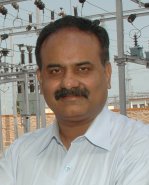
Ajay Pandey
Dr. Ajay Bhushan Pandey is a distinguished alumnus of the Institute of Technology, earning his master’s in computer science in 2000 and his Ph.D. in computer science in 2003. Dr. Pandey is currently the managing director of the Maharashtra State Electricity Distribution Company Ltd. (MSEDCL), the largest distributor of electricity in India.
After Dr. Pandey completed his Ph.D. he continued on his long-term mission to improve his home country and returned to India to renew his previous work in the Indian government. In his current role as managing director of the largest electricity distribution utility in India, he manages 70,000 employees and provides electricity to more than 14 million consumers. In the first 18 months under his leadership, he successfully led efforts to reduce distribution loss of electricity and raised annual revenue. He was also appointed as a member to the Indian government’s energy policy committee, an honored and influential position.
+
2007
Jeffrey Dean
CS&E alumnus Jeffrey Dean (B.S. 90) works at Google in California as Google Fellow in the Systems Infrastructure Group. He has a passion for building useful systems, and is willing to tackle any problem, no matter how daunting it looks. Dean’s contributions at Google range from low level libraries to high level components and services, all used extensively by various groups and products at Google as building blocks.
He has helped design and implement five generations of the software to handle searches entered on google.com, and played important roles in several of Google’s advertising products. Dean has also worked on key pieces of distributed systems infrastructure, including MapReduce and BigTable. Bigtable is used underneath more than 80 Google products, and MapReduce is the primary system used for large-scale batch computations at Google. These and other contributions by Dean play a critical role in the scaling of Google’s Web search system so that it can handle thousands of queries per second over billions of documents in fractions of a second.
Dean received a B.S., summa cum laude from the University of Minnesota in Computer Science & Economics in 1990, and a Ph.D. from the University of Washington in 1996. Before joining Google, he worked for Digital Equipment Corporation’s Western Research Lab in Palo Alto, where he worked on low-overhead profiling tools, design of profiling hardware for out-of-order microprocessors, and Web-based information retrieval. From 1990 to 1991, he worked for the World Health Organization’s Global Programme on AIDS, developing software to do statistical modeling, forecasting, and analysis of the HIV pandemic.
+
2005
Don Krantz
This year’s distinguished alumni award recipient, Dr. Krantz, is currently Vice President and Chief Technology Officer at MTS Systems Corporation, a global supplier of testing products and industrial sensors. MTS testing products help customers accelerate and improve their design, development, and manufacturing processes and are used for determining the mechanical behavior of materials, products, and structures. Dr. Krantz has also held the positions of Vice President of Engineering and Technology for MTS’ Test Division, Vice President, Advanced Systems Division, and Program Manager in the Advanced Systems Division. Prior to coming to MTS, Dr. Krantz was an Engineering Fellow at Honeywell Defense Systems Division and Alliant Techsystems Inc.
His technical accomplishments are seminal and span a variety of technical areas. He wrote the AVOS CP/M-based operating system for the blind and visually impaired in the early 1980’s. Working for Honeywell in the late 1980’s, he was a systems engineer helping to prototype several remotely-piloted and autonomous land vehicle concepts for the military. He wrote the Ada-based Aladdex operating system for the DARPA Aladdin multiprocessor. During this time, he was a lead developer of the automatic fire control system for the Paladin M109E5 Howitzer, the first fielded military system using embedded Ada software. At MTS in the 1990’s, he worked with Prof. Maria Gini (he was awarded a CS&E Ph.D. working under her guidance) and Prof. Max Donath on various aspects of system architecture and localization subsystems for mobile robots, including RoboCart and the MnDOT SafeTruck. He was one of the main developers of the DARPA Distributed Robotics program Scout robot working with Prof. Nikos Papanikolopoulos, defining operational concepts, mechanical designs and writing the first set of embedded software. During this same period, he developed several systems for AeroMet Corp, DARPA, the Army Research Lab, and Lockheed Martin for 3-D direct fabrication of titanium components using laser-additive manufacturing. Working with Profs. Sue Mantell, Dennis Polla, Ramesh Harjani, and others, he was the PI and systems engineer for a novel remotely-queried embedded wireless strain sensor using RFID technology and MEMS strain sensors. He was project engineer for several large-scale seismic research shaker tables, including the multi-table system at the Bridge Structures Lab at UNR. He has published two books and has publication credits on about 60 articles in various trade magazines and academic journals.
+
2003
Richard Weinberg
For his original contributions and leadership in the areas of Computer Graphics and Animation, and their application to the Media Arts and Sciences. Weinberg established the Computer Graphics Group at Cray Research and developed computer graphics software and systems for NASA's Johnson Space Center, Lockheed Electronics, and Digital Productions.
Weinberg's research interests include computer animation, scientific visualization, visual effects and entertainment technology. As digital movie production expands to include distributed computing facilities, he and his colleagues are increasingly dependent on high-speed, worldwide networks to review and revise digital film clips, computer animation and virtual sets remotely. They also rely on increasingly powerful graphics workstations and encounter software issues similar to those that challenge researchers that use computing in the sciences.
+
2001
Arvind
Arvind is the Johnson Professor of Computer Science and Engineering at the Massachusetts Institute of Technology and a member of CSAIL (Computer Science and Artificial Intelligence Laboratory). Arvind's research interests are synthesis and verification of large digital systems described using Guarded Atomic Actions; and Memory Models and Cache Coherence Protocols for parallel architectures and languages.
+
1999
Ted Johnson
Johnson's company developed Visio, a graphics program able to perform a wide variety of tasks with a low degree of difficulty. Visio was an immediate hit, quickly becoming the best-selling drawing program in the marketplace.
In September 1999, Microsoft acquired Visio in a deal valued at $1.3 billion. "Our biggest motivation to approach Microsoft was to capitalize on their global marketing," Johnson says. "We're dealing with high-volume software purchasing, beyond personal purchases in a computer store."
Johnson and his wife now live in Seattle, where he is vice president of Microsoft's business tools division. In fall 2001, they donated $1.5 million to the University. Their gift will fund the new Digital Design Consortium, a joint research and educational venture among University faculty in architecture, computer science, and other fields.
By combining design and digital technology, consortium researchers aim to create new tools that expand the boundaries of complex design modeling and allow designers to translate their ideas into multi- dimensional sketches. It's a natural fit for Johnson, whose University studies encompassed both fields.